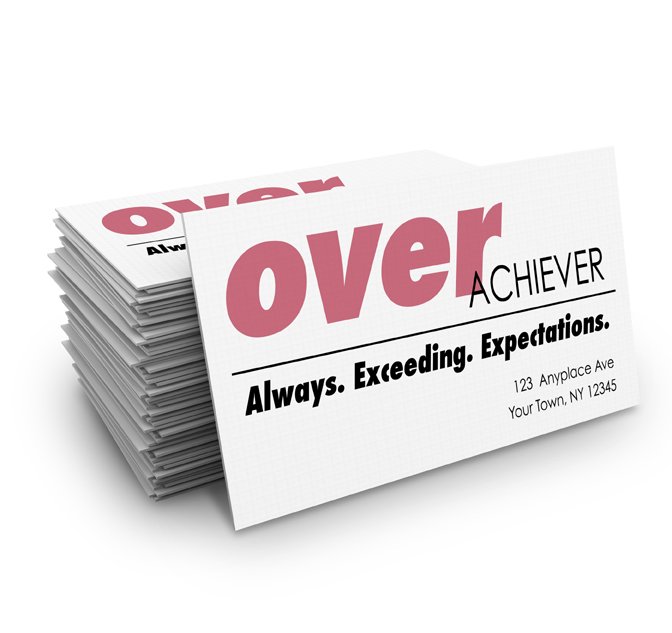Table of Contents
Tips, Checklists And A Video For Better Business Card Design
If you are new to graphic business card design and decide to design your own business card here are a few tips to consider as you complete the project. When you are done reading and have viewed the design video, don’t forget to click and get your copy of the business card tip infographic at the bottom of the page.
1. Designing A Business Card? Be sure you understand your Printer’s Business Card Design Specifications
If you are going to use a local or online printing service to print your business card design, you need to understand the standard printing requirements. This will ensure that your business card design is print-ready and the whole process will proceed smoothly without rejections and multiple file submissions.
Set the color mode of your artwork to CMYK. Many people submit RGB files, but RGB is more appropriate for web work you will find that most printers prefer CMYK for print work.
Let the printer know if you want to have rounded corners on your card. This can make your card stand out and add a more upscale look for a slight added price. But if you do go with rounded corners design your artwork to reflect that. All text and images need to be an extra 1/8″ further away from the edges when you will be rounding corners. It also may call for extra day of lead time for your printer. Itis great to have a printer who is available and lets you ask questions.
2. Stay Mindful Of Business Card Trim and Bleed Lines

Be aware of the bleed and trim lines on your design. Bleed is the part of your design that extends beyond the size of your artwork, essentially assisting your printer by extending your art past the print area so when the printer makes his cut it will be a clean cut and not cut off any essential artwork or text.
If you only had your art go to the actual print size you might end up with a very small and obviously unintentional border. Borders always need to be wide enough so people view them as part of your intentional design and not a mistake. Trim refers to the cut line; the final size of your printed piece. And safe area is the last 1/8 of an inch near your cut line that includes all essential elements of your artwork. You don’t want any text or graphics that need to appear to be close to the cut line. Lastly, to ensure the graphics print cleanly you are best off submitting art at 300 dpi (dots per inch) to ensure that everything looks sharp and in focus…high resolution.
3. Clearly Communicate Your Message
Keep your message orderly and concise. Check your spelling and phone numbers at least twice. Then check them again. Use appropriate fonts, be mindful of their size and don’t use more than two or three fonts. Too many fonts is busy and confusing. If your customer base is older, you may want to avoid small fonts. Double check your web site address and email addresses so that you have the dots correctly.
Business cards are more difficult to design these days because so much information seems to be essential. ie: phone, office, cell numbers, web site , email address and social media. It can be a lot to fit it in on a single card, but try to avoid clutter. Many people leave off the htpp://.www on their web site.
4. Be Consistent
Stay true to your brand. Use the same colors, logo, and type face as you do in your other print pieces, website and company Facebook page. If you don’t have a clean high resolution copy of your logo, then now would be a good time to have your printer or designer spruce it up or “vectorize it”. Stay consistent with all employees. Everyone’s card should reflect that they all work for the same company. It looks odd when two people within the same company attend a meeting and hand a person two different looking business cards.
This may be a good reason to keep business card orders smaller to 250 or 500 instead of a thousand. It gives a chance more often to get everybody caught up and on the same page following company changes. Especially on the first printing. Some people make tweaks on a second printing.
5. Keep a Professional Look To Your Business Card Design
Use software comparable to Photoshop or Illustrator, not Microsoft Word or Publisher. Print your business cards on good cardstock. 14 pt or 16 pt. are always good choices. Gloss is a personal choice some people like a shiny card others prefer a matte finish. Still if you are leaving the back of the card blank it is often a good idea to not have gloss on the back for the times you want to write down a note, phone number or quote for a client. For information on printing, design and pricing on Cloud 8 Printing’s business cards go to Business Card page call 614-273-0845.
Design A Business Card With Using Canva
Bonus: Here is a video lesson using Canva to create your own free business card design.
Watch the video Design A Business Card Using Canva, your PC Classes online teacher Mark is very good at taking you through all the steps with clear explanations.
Call or contact Cloud 8 Printing when you are finished and we will offer you a great deal on printing your designed cards. Or if you decide you would rather have someone else design your card, we’re here for you for that too.
Click the button below for a great cheat checklist.
Design Dos & Don'ts Business Card Infographic


